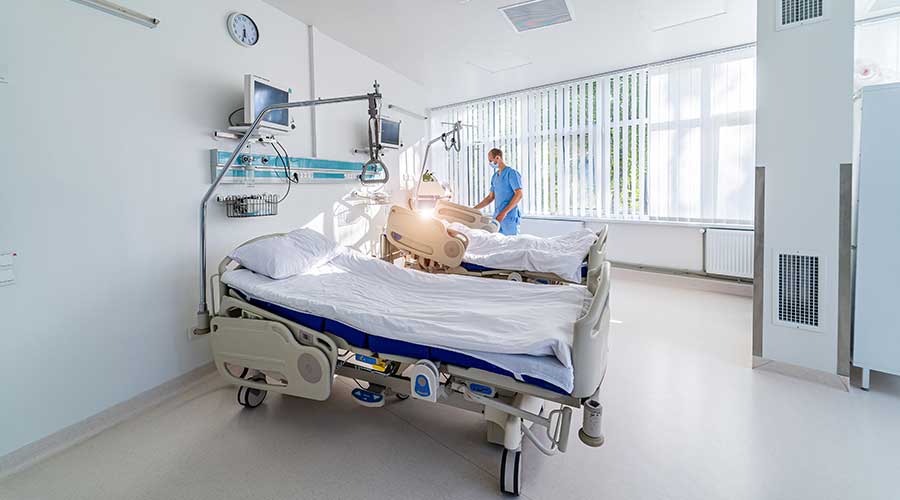Patient care equipment (PCE) and other frequently used items serve as reservoirs for pathogenic microorganisms in healthcare facilities. Without a comprehensive program of identifying responsibilities for cleaning and disinfecting each piece of patient care equipment, these so-called orphans are left untouched and become fomites, which are objects or materials such as clothes, utensils and furniture that are likely to carry infection.
By taking care of orphan PCE, a healthcare facility’s infection prevention strategy will become more comprehensive.
Critical considerations
Cleaning and disinfecting are two separate tasks. To ensure successful infection control for PCE, managers need to address several important questions:
- When should cleaning be performed on a piece of PCE?
- How often should PCE be cleaned and disinfected?
- Should an environmental services professional clean and disinfect all PCE, or is it a shared responsibility?
- If it is a shared responsibility, is every job class who is cleaning and disinfecting PCE educated and trained on the importance of breaking the chain of infection by proper cleaning and disinfection? Is a competency assessment done annually?
There are several reasons it important to keep a separation between clean and dirty PCE:
- The Centers for Medicare and Medicaid (CMS) and other regulatory agencies require that all shared non-critical PCE must be cleaned according to manufacturer recommendations. See CMS Elements: 2.D 16 and 2.D 17 from the survey worksheet.
- According to The Joint Commission Standard IC.02.02.01: “The hospital reduces the risk of infections associated with medical equipment, devices and supplies.”
Many people are at risk of developing an infection from contact with medical equipment, devices or supplies while seeking health services. Failure to properly clean, disinfect or sterilize and use or store medical equipment, devices and supplies not only poses risk for the person seeking health services. It also carries the risk for person-to-person transmission of infections.
Getting started
Nursing administration, hospital administration, infection prevention and control, environmental services, sterile processing and material distribution should develop a hospital policy and procedures for ensuring all orphan PCEs are cared for.
There are numerous steps involved in the cleaning, disinfecting, and sterilizing of medical equipment, devices, and supplies, so it is critical that healthcare workers follow standardized practices to minimize infection risks related to medical equipment, devices and supplies.
To maintain a reliable system for controlling the PCE process, environmental services managers need to pay attention to the following:
- orientation, training and competency of healthcare workers who are processing medical equipment, devices, and supplies
- levels of staffing and supervision of the healthcare workers who are processing medical equipment, devices, and supplies
- standardization of the process, regardless of whether it is centralized or decentralized
- reinforcing the process, such as the use of placards that list the steps to be followed according to equipment manufacturer’s information for use
- ensuring all the necessary chemicals and disinfectants are readily available and stocked to a par level
- ongoing quality monitoring using fluorescent markers and black light or ATP measurement
- following up education with those responsible for unclean PCE
- reporting monitoring results to infection control and patient safety meetings.
J. Darrel Hicks, BA, MESRE, CHESP, Certificate of Mastery in Infection Prevention, is the past president of the Healthcare Surfaces Institute. Hicks is nationally recognized as a subject matter expert in infection prevention and control as it relates to cleaning. He is the owner and principal of Safe, Clean and Disinfected. His enterprise specializes in B2B consulting, webinar presentations, seminars and facility consulting services related to cleaning and disinfection. He can be reached at darrel@darrelhicks.com, or learn more at www.darrelhicks.com.

 Design Plays a Role in the Future of Healthcare
Design Plays a Role in the Future of Healthcare Cedar Hill Regional Medical Center GW Health Officially Opens
Cedar Hill Regional Medical Center GW Health Officially Opens Designing Healthcare Facilities for Pediatric and Geriatric Populations
Designing Healthcare Facilities for Pediatric and Geriatric Populations Kaiser Permanente Announces New Hospital Tower at Sunnyside Medical Center
Kaiser Permanente Announces New Hospital Tower at Sunnyside Medical Center Building Disaster Resilience Through Collaboration
Building Disaster Resilience Through Collaboration